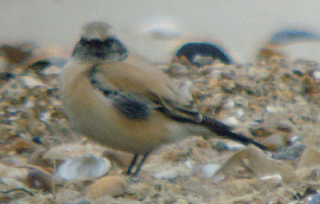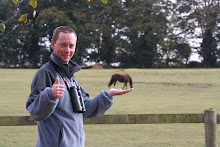I have to say that the Snettisham WeBS count doesn't always inspire me with much joy but today was different. The morning was bright and crisp after a light frost and the tide was high enough to bring the birds in close. The only downside was the results of the surge tide last night. The main access path to the end hides were blocked by flooding and there was even water coming through the shingle bank onto the pits!
A change of route allowed me to pick up part of the white-fronted goose flock that has recently arrived with 65 flying out onto the local fields. The pits were quiet, so it was the long walk along the seawall to the count the saltmarsh and mud. By the end of the count the knot figure (partly counted by Jim) was just under 30,000, 1300 dunlin, 3000 oystercatcher, 2 peregrine and a further 21 white-fronts on the Sandringham farmland.
Once I got back to Titchwell, it was apparent that we had not escaped the tide with 4-6' of dunes being lost and also a small amount of water on the main path at volunteer marsh! A nice adult whooper swan dropped onto the new reedbed pool and a male hen harrier roosted.
Just heard from Keith that one of the chaffinches we re-trapped on Saturday morning was originally rung on the site in September 2003!

















